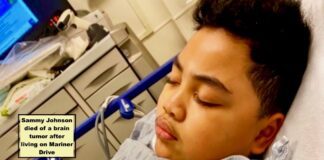
by Ahimsa Porter Sumchai, MD
If spirits haunt the shoreline of the Hunters Point Naval Shipyard, they most certainly include the spirits of animals! The history of the federal Superfund site is replete with the mass killing of animals.
This is not a happy story – it saddens me to tell it. This is a story about the human impact of the loss of animal companions on shipyard shoreline workers and neighbors. It begins in the City of St. Francis, the patron saint of animals.

In 1868, southeastern San Francisco’s “Butchertown” flourished on a peninsula surrounded by water and fields of open land. Herds of cattle were driven by cowboys from slaughterhouses located along Islais Creek down Third Street and Evans Avenue through a network of stockyards that, by 1877, housed 18 slaughterhouses, tanneries, wool pulleries and fertilizer plants. Butchertown smelled “to high hell” and by 1878 slaughterhouses were banned by ordinance in every city neighborhood. They ultimately closed in 1971.

The world’s first nuclear disaster
Chemist Glenn T. Seaborg, longest serving chair of the Atomic Energy Commission, called Shot Baker “the world’s first nuclear disaster.” Over 42,000 military and civilian personnel participated in Operation Crossroads conducted in the Bikini Atoll in July of 1946. Critics had voiced concern about the “grandiose display of atomic power” during United Nations discussions over international atomic energy controls in May of 1946.

Plans to expose live animals to radioactivity generated protest letters from the Society for the Prevention of Cruelty to Animals. According to the Naval Radiological Defense Laboratory (NRDL) Briefing Book, over 5,600 goats, pigs, guinea pigs and rodents were placed in compartments and strapped onto ship decks to evaluate the biological effects of the bomb.

Shot Baker turned the assembled ships into “radioactive stoves that burned all living things aboard with invisible and painless but deadly radiation” wrote a Navy official in a classified cable sent to the Joint Chiefs of Staff. According to the National Security Archive, Shot Baker created a radiological disaster. Military personnel assigned to salvage the contaminated test ships were exposed to dangerous levels of ionizing radiation.
Mangled but still afloat, six target vessels were hauled back to the Hunters Point Naval Shipyard. In the months following Operation Crossroads, an additional 18 target ships and 61 support ships were towed to Hunters Point for futile decontamination efforts.
According to investigative journalists Jason Fagone and Cynthia Dizikes: “After the A-bomb tests, Navy leaders realized a special facility was needed to wash the contaminated clothing of sailors at Hunters Point,” and a “radioactive laundry” was installed inside Building 503.

Each wash cycle flushed over 100 gallons of radiation-contaminated water into pipes and drains. That building was demolished, its footprint covered with five feet of soil. Building 606 was constructed in 1986 on top of it. Building 606 is located at the border between radiation-contaminated Parcel D and Parcel E.
On Feb. 13, 1996, Mayor Willie Brown and Navy officials announced the San Francisco Redevelopment Agency would lease Building 606 to the Police Department for $18,000 a month. As early as 1993 the Navy had detected lead and benzene in the soil and lead, copper and petroleum products in the drinking water.
Eight officers underwent examination by a UCSF physician for symptoms linked to toxic environmental exposures and in 1997 an industrial hygienist with the San Francisco Department of Public Health warned of “serious problems” at Building 606.
In 2018, a blockbuster exposé by Chris Roberts appeared in SF Curbed that identified widespread falsification of soil tests conducted by Navy contractor Tetra Tech. In Abbey et al. v. United States of America Department of the Navy, 400 SFPD officers, staff and spouses sued the US Navy for health effects they believe are due to toxic exposures from the site including asthma, blood disorders, lung cancer, brain cancer and two German shepherd deaths from cancer.
According to an officer with the canine unit: “Some of these guys … slept with their dogs. The dogs weren’t pets, but they lived with these guys. Some brought them in their houses.”

K-9 officers ran their dogs through the “killing fields” of the shipyard’s most dangerously contaminated regions. According to the Chronicle investigation, a K-9 officer stationed at Building 606 expressed concern over the shipyard’s history of nuclear testing as the K-9 dogs started getting sick.
A sable-colored German shepherd named Crocker ran into a glass door at high speed. At surgery his spleen was found to be full of tumors.
“These buildings were ‘hot’ chemistry and biology labs, kennels for animals given lethal doses of radiation and storage vaults for radioactive elements used in experiments. The Navy stashed drums of radioactive waste in temporary shacks in the area.” – excerpted from “Working in a Wasteland” by Jason Fagone and Cynthia Dizikes for the San Francisco Chronicle July 26, 2018.
The Biological and Medical Sciences Division of NRDL, headquartered in Building 815 on the shipyard’s southern shoreline, conducted cruel animal experiments “to assess, evaluate and prevent radiation injury in humans.” Scientists measured the biological effects of exposure from different sources of radiation including gamma rays, neutron radiation and beta particles at varying doses, rates and exposure pathways causing skin burns, gastrointestinal bleeding and central nervous system damage.

Animal kennels used by NRDL are located on the shipyard’s southern shoreline in regions designated Parcel E-2. Buildings 830 and 831 were sold to UCSF following the closure of NRDL in 1970 for use as kennels. Building 830 at 75 Crisp Road houses up to 30 full time and part time UCSF employees. It is located within 200 feet of an industrial landfill where barrels of irradiated animal carcasses were disposed of along with an estimated 2,750 radium dials.

As attending physician for the Palo Alto Veterans Administration Toxic Registry in 1997, this author medically evaluated a former serviceman who carried barrels of irradiated animal carcasses for disposal into the Parcel E-2 landfill. Years later he developed a rare cancer of the abdominal wall that obstructed his lymphatic drainage system causing his torso to expand grotesquely as his tissues accumulated the blocked lymphatic fluid.

The Hunters Point Community Biomonitoring Program conducted urinary toxic exposure screenings on 15 current and former UCSF workers sited at 75 Crisp Road in Building 830. The urine screenings include an animal technician who worked for 12 years at Nobel Prize winner Dr. Stanley Prusiners’ Institute for Neurodegenerative Diseases once sited in Building 830.
Human biomonitoring links radioactive and carcinogenic heavy metals to death of pets
I expected her urinary toxic screening to be serious – but not this serious! That was my immediate impression after receiving the lab result conducted on an extremely high risk 55-year-old woman who requested the toxicology test after viewing a YouTube video I created of the western fence line that separates the shipyard’s chemical and radiation-contaminated shoreline from “Three Street,” the heart of the Bayview Hunters Point community – less than a mile away.
She has lived within 250 feet of that unguarded chain metal fence for 25 years. During that time, she has suffered the loss of six animal companions – dogs and cats – from what she has witnessed to be primarily cancers of the head and neck. She recalls a cat with a bulging tumor of the right eye, a beautiful dog Apollo with visible tumors of the neck, animals with symptoms of nerve damage who “went out there [to the shipyard] to die” and a cat who bled to death from feline leukemia.

In all three urine screens we detected a deadly combination of chemicals capable of killing humans and small animals. The implications for a neighborhood hosting the city’s largest childhood population cannot be understated. There are schools, playgrounds and childcare centers within 500 feet of the shipyard shoreline.
Arsenic exposure alone can be deadly! Inorganic arsenic from agricultural and industrial sources is the most toxic form and is linked to multiple cancers. Arsenic is used as a rodent killer, herbicide and pesticide at the Hunters Point shipyard and has been detected in soil, groundwater and landfills in 70 percent to 100 percent of samples.
Thallium is a highly toxic cumulative poison to humans with effects most severe in the nervous system and was banned from wide use in rat poisons and insecticides. Thallium compounds are colorless, odorless and tasteless.
Thallium has 41 isotopes. It is detected in soils on the contaminated southern shoreline at a frequency of over 40 percent. The Hunters Point Community Biomonitoring Program is detecting thallium in about 50 percent of screenings conducted on shipyard residents and workers.

The radioactive metals cesium, uranium, strontium, rubidium and manganese together form a toxic “stew” made even more dangerous when “flavored” with cancer-causing heavy metals like nickel, platinum, chromium and cadmium. The Hunters Point Community Biomonitoring Program has mapped a cluster of cancers proven to be induced by exposure to radiation in shipyard neighbors. The black pins correspond to animals verified to have died of cancer.






Ahimsa means lover of animals. Ahimsa Animal Welfare is the philosophy of nonviolence, respect and care for all living things. In Jainism, Ahimsa means to be without harm, to be utterly harmless, not only towards oneself and others, but to all forms of life, from the largest mammals to the smallest bacteria.

Ahimsa is invoked in the Mahabharata to condemn cruel practices, the futile destructiveness of worldly existence and to proclaim the sanctity and dignity of life.
In the April 2021 Statesman article “Gandhi’s Ahimsa,” author Jaydev Jana cites the aphorism found in the Mahabharata: “Ahimsa param dharma.” Ahimsa as the highest religion as a cardinal virtue and fundamental tenet of three major religions – Hinduism, Buddhism and Jainism.
“To Gandhi, Ahimsa was not only the means but also the end. It was not only during the struggle for freedom that he wanted Ahimsa to be practiced. He wanted a non-violent society.”
SF Bay View Health and Environmental Science Editor Ahimsa Porter Sumchai, MD, PD, founder and principal investigator for the Hunters Point Community Biomonitoring Program, founding chair of the Hunters Point Naval Shipyard Restoration Advisory Board’s Radiological Subcommittee and contributor to the 2005 Draft Historical Radiological Assessment, can be reached at AhimsaPorterSumchaiMD@Comcast.net. Dr. Sumchai is medical director of Golden State MD Health & Wellness, a UCSF and Stanford trained author and researcher, and a member of the UCSF Medical Alumni Association Board of Directors.

 Store
Store



